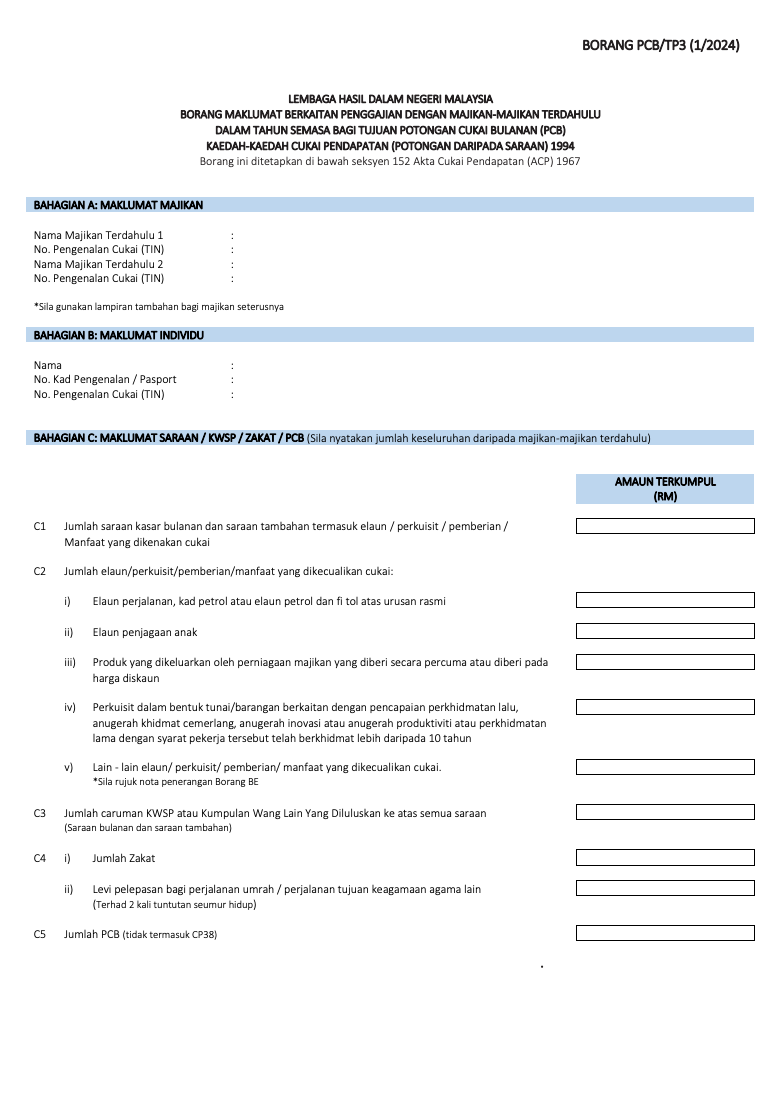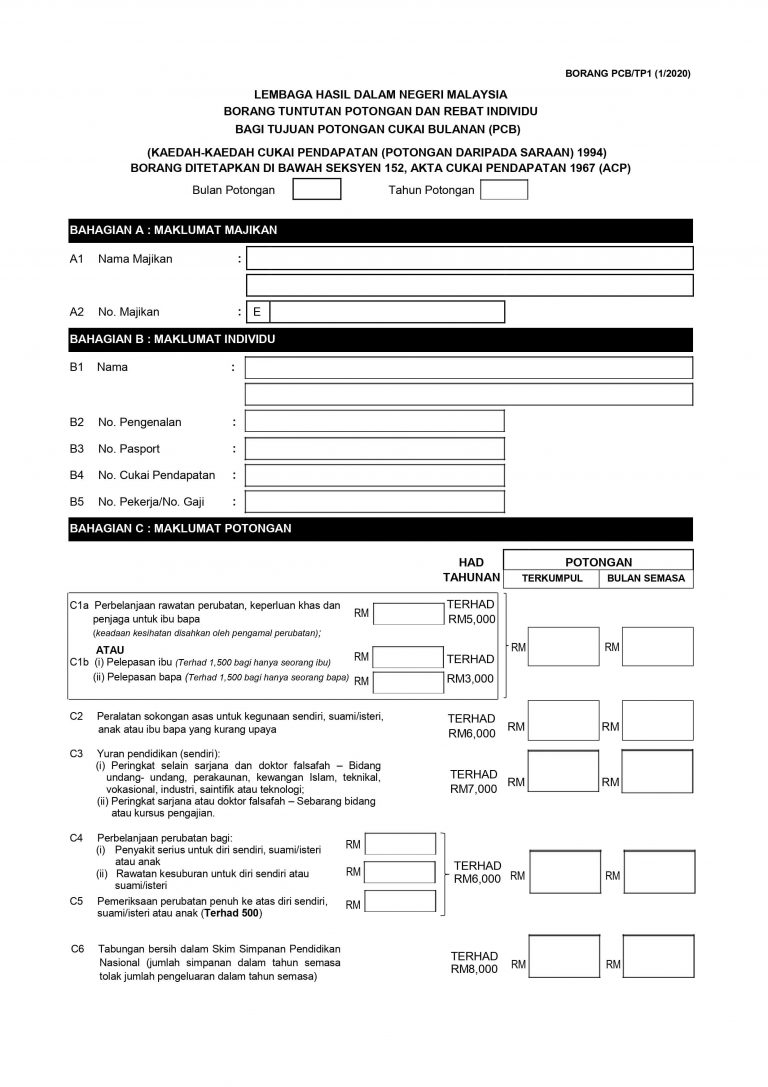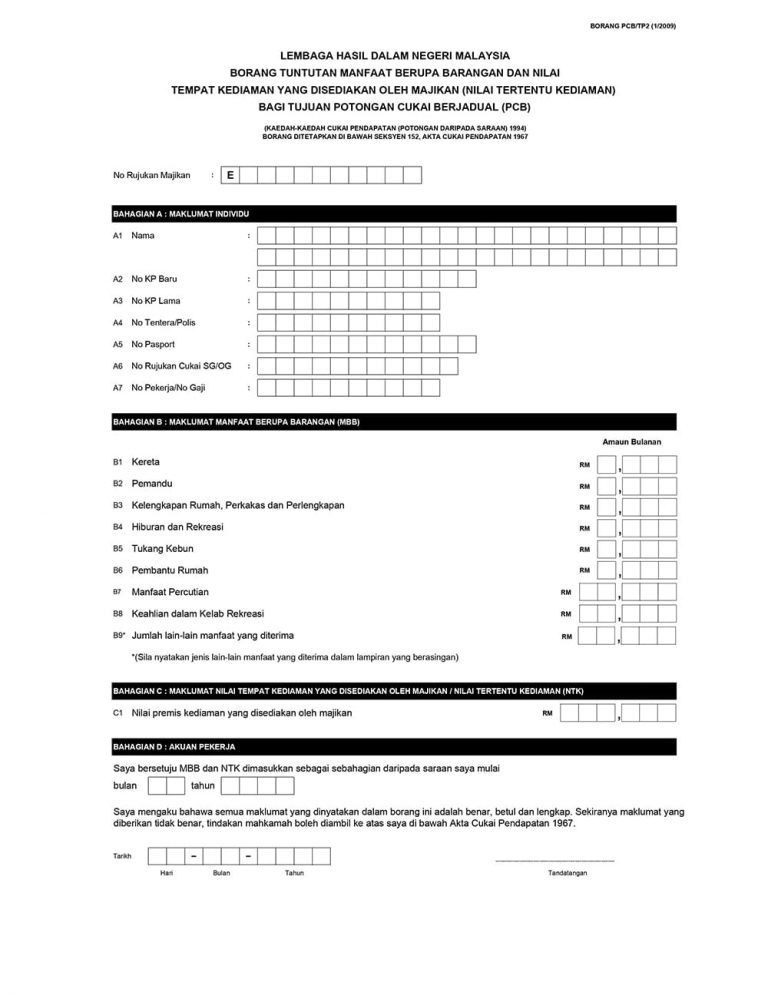
TP1, TP2, and TP3 Forms Malaysia: Definition, Requirements, Free Download Form
Are You Hiring?
Find candidates in 72 Hours with 5+ million talents in Maukerja Malaysia & Ricebowl using Job Ads.
Hire NowWhen employees start a new job, they often overlook an important tax requirement: submitting Form TP3 to their new employer.
This form ensures that past employment income and deductions are carried forward correctly, preventing errors in Monthly Tax Deduction (MTD) calculations.
That is why, employers must understand the role of TP3, TP1, and TP2 to manage tax deductions efficiently and prevent compliance issues.
Read the details about TP3, TP1, and TP2 below.
What is Form TP3?
Form TP3 is a tax document that employees must submit when switching jobs within the same tax year.
It contains details of their previous income, tax deductions, and benefits claimed from their former employer.
This ensures accurate MTD calculations under Malaysia’s tax laws.
When to Submit TP3 Form?
You should submit the TP3 Form to your new employer as soon as you start your job to ensure that your monthly PCB (Potongan Cukai Bulanan) or MTD (Monthly Tax Deduction) is calculated correctly.
Who Should Submit TP3?
Employees who change jobs within the same tax year must provide a TP3 Form to their new employer.
If the employee does not submit TP3, the new employer will not have access to prior earnings and tax deductions, which may result in incorrect MTD calculations.
Where to Submit TP3?
HR or payroll department will receive the completed TP3 Form from your new employee.
The employer will use this information to adjust your PCB calculation and submit it to LHDN (Lembaga Hasil Dalam Negeri Malaysia).
Information Required in TP3 Form
TP3 contains key details that employers must consider when processing payroll for new employees. The form includes:
-
Previous employer’s details: company name and tax reference number.
-
Employee’s personal details: full name, IC number, and tax file number.
-
Previous income: basic salary, allowances, and benefits received.
-
Deductions and contributions: EPF, SOCSO, EIS, and any tax reliefs or rebates claimed in the year.
-
Tax already paid: PCB deductions and any Zakat contributions.
Free Download TP3 Form PDF

Download the TP3 Form here.
What is Form TP1?
Form TP1 is used by employees to claim tax reliefs, deductions, and rebates before their monthly salary is taxed.
Employees submit this form to their employer so that their Monthly Tax Deduction (MTD/PCB) accurately reflects their eligible deductions.
Who Should Submit TP1?
Employees who want to reduce their monthly PCB/MTD deductions by declaring additional tax reliefs or rebates should submit a TP1 Form.
New hires or employees switching jobs do not need to submit TP1 Form immediately unless they want to adjust their PCB based on additional tax reliefs.
When Should Employers Process TP1 Form?
Employers should process the TP1 Form as soon as an employee submits it.
Since TP1 affects the employee’s PCB deductions, it should ideally be submitted before the payroll processing deadline of the respective month to ensure the changes take effect in that month’s salary cycle.
Where Should Employers Keep TP1 Form?
Employers do not need to submit the TP1 Form to LHDN. However, they must keep a copy for at least seven years for record-keeping and audit purposes.
The HR or payroll department should have a structured filing system to store these forms securely.
Common Tax Reliefs Claimable Under TP1
Employees can claim tax reliefs such as:
-
EPF and Life Insurance: contributions to retirement savings and insurance.
-
Medical and Education Expenses: personal and family medical treatments, and tuition fees.
-
Childcare Fees and Parental Care: expenses for children and dependent parents.
-
Books, Internet, and PRS Contributions: purchase of educational materials and private retirement savings.
Free Download TP1 Form PDF

Download the TP1 Form here.
What is Form TP2?
Form TP2 helps employees declare additional tax deductions related to one-time payments such as bonuses, commissions, or lump sum incentives.
This prevents excessive MTD deductions on these payments.
Who Needs to Submit TP2 Form?
Existing employees who want to update their tax reliefs, deductions, or rebates should submit the TP2 Form.
This form is not required for new hires or employees changing jobs, as they should submit a TP3 Form instead.
When to Submit TP2 Form?
Employers should process the TP2 Form as soon as an employee submits it, preferably before payroll processing.
This ensures that any changes in tax reliefs, deductions, or rebates are reflected in the next salary cycle.
Delays in processing may result in incorrect PCB deductions, leading to tax adjustments later.
Where Should Employers Keep TP2 Form?
Employers do not need to submit the TP2 Form to LHDN. Instead, it must be kept for internal records for at least seven years.
Free Download TP2 Form PDF

Download the TP2 form here.
TP1 vs TP2 vs TP3 Form
|
Form |
Purpose |
Who Submits? |
When to Submit? |
Where to Submit? |
Employer’s Responsibility |
|---|---|---|---|---|---|
|
TP1 |
Declaring additional tax reliefs and rebates to reduce PCB/MTD deductions. |
Existing employees with eligible tax reliefs (e.g., lifestyle relief, medical expenses, zakat). |
Anytime during employment when new reliefs apply, preferably before payroll processing. |
HR or Payroll Department (Employer keeps for records). |
Verify, update payroll deductions, store for 7 years for audit purposes. |
|
TP2 |
Updating tax reliefs and deductions for more accurate PCB/MTD calculations. |
Existing employees with changes in tax reliefs (e.g., insurance, EPF, parental care). |
Before payroll processing when changes in tax reliefs occur. |
HR or Payroll Department (Employer keeps for records). |
Verify, adjust payroll, ensure compliance, store for 7 years. |
|
TP3 |
Transferring PCB tax records from a previous employer to a new employer. |
New employees joining from another company. |
Upon joining a new company. |
HR or Payroll Department (Employer keeps for records). |
Use previous employer’s tax records for PCB calculations, store for 7 years. |
How to Submit TP1, TP2, and TP3 Form
When a new employee submits these forms, employers must follow a structured process to ensure accurate tax deductions.
Below is a step-by-step guide on how to handle the TP1, TP2, & TP3 Form submission:
1. Receive and Verify These Forms
Once an employee submits the Forms, check if all required fields are filled correctly.
Ensure the employee has provided details of their previous employment, including income, tax deductions, and reliefs.
If there are missing details, ask the employee to complete the form before proceeding.
2. Keep a Copy for Records
Employers do not need to submit the TP3 Form to LHDN.
However, it is essential to keep a copy of the form for at least seven (7) years in case of an audit or request from LHDN.
Store it securely in the employee’s payroll file or HR system.
3. Adjust the Employee’s Monthly Tax Deduction (PCB/MTD)
Using the details from the TP3 Form, update the payroll system to ensure the correct amount of PCB (Potongan Cukai Bulanan) is deducted.
Include previous income, reliefs, and deductions so the employee is not over-taxed.
4. Run Payroll with Updated Tax Calculations
Before processing the next payroll, double-check that the employee’s updated tax calculation is reflected in the system.
This ensures the correct tax amount is deducted and avoids any discrepancies in LHDN reporting.
5. Monitor for Any Future Adjustments
If the employee submits additional updates on their tax reliefs or deductions later in the year, adjust the payroll system accordingly.
Keeping track of tax changes will help avoid over-deductions and ensure compliance with LHDN regulations.
FAQ
When should employees submit TP1, TP2, and TP3 forms?
Employees should submit TP1 when they want to claim tax relief to reduce their monthly tax deductions.
TP2 is required when employees receive bonuses or commissions and need adjustments in their tax calculations to avoid over-deduction.
Meanwhile, employees who start a new job within the same tax year must submit TP3 to declare their previous earnings, ensuring accurate tax deductions under the new employer.
Can an employee submit TP1 multiple times a year?
Yes, TP1 can be submitted multiple times if new tax reliefs apply within the same year.
What happens if an employee does not submit TP3 after switching jobs?
If TP3 is not submitted, the new employer may calculate tax deductions inaccurately and leads to underpayment or overpayment of tax.
How do employers verify the information provided in TP forms?
Employers can cross-check the details in TP forms against payslips, previous tax records, and supporting documents.
Can employees still claim tax reliefs if they forget to submit TP1?
Yes, employees can still claim tax relief during their annual tax filing. However, it is more convenient to adjust MTD throughout the year by submitting TP1 on time.
Struggling to Attract and Keep Good Employees?
Many companies lose great talent because salaries alone aren’t enough.
Employees want to feel valued with Benefit in Kind (BIK) perks like TP1, TP2, and TP3. Without these, they may leave for better opportunities.
Don’t let your best people walk away! Offer the right benefits and build a loyal, motivated team. Post your job today and hire top talent that stays.
Read More:
- Total Tax Exempt Allowances, Perquisites, Gifts & Benefits in Malaysia (2025)
- Benefits in Kind (BIK): Definition, Table, Calculation Formula
- Submit Your 2024 Tax Returns Online Starting March 1
- E-Invoicing Deadline Extended for SMEs Earning Below RM500K
- Steps to Submit CP22 for New Employees in Malaysia on LHDN MyTax Portal
- EA Form (C.P. 8A): Free Download Form, Deadline & How to for Employers
- Malaysia Tax Bracket 2025: Income Tax Rates for Employers
- Malaysia Form E 2025: Submission Guide, Deadline, and Penalties
- Offer Letter: Definition, How To, and Free Templates
- PCB (Potongan Cukai Bulanan) in Malaysia: A Complete Guide for Employers

